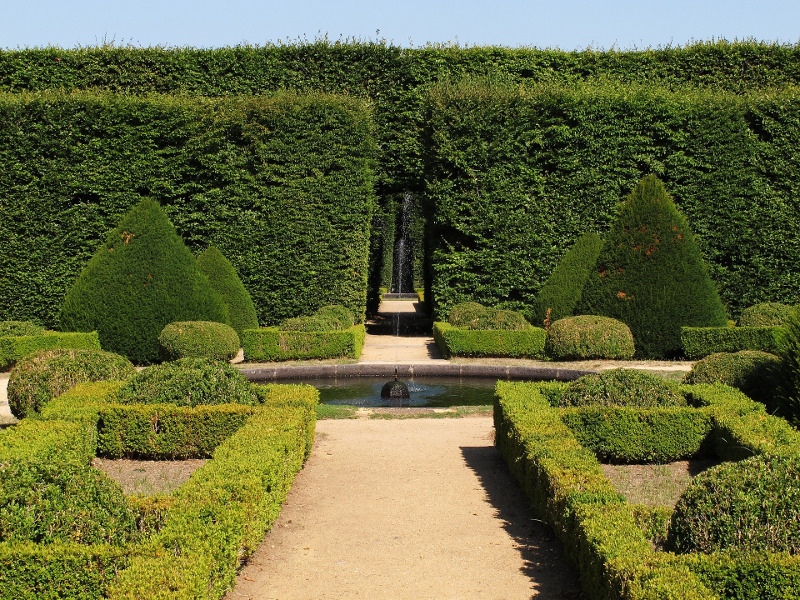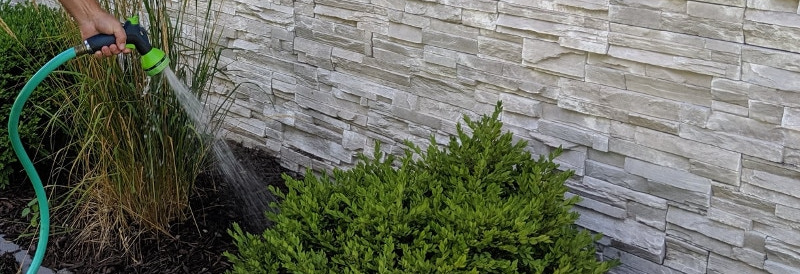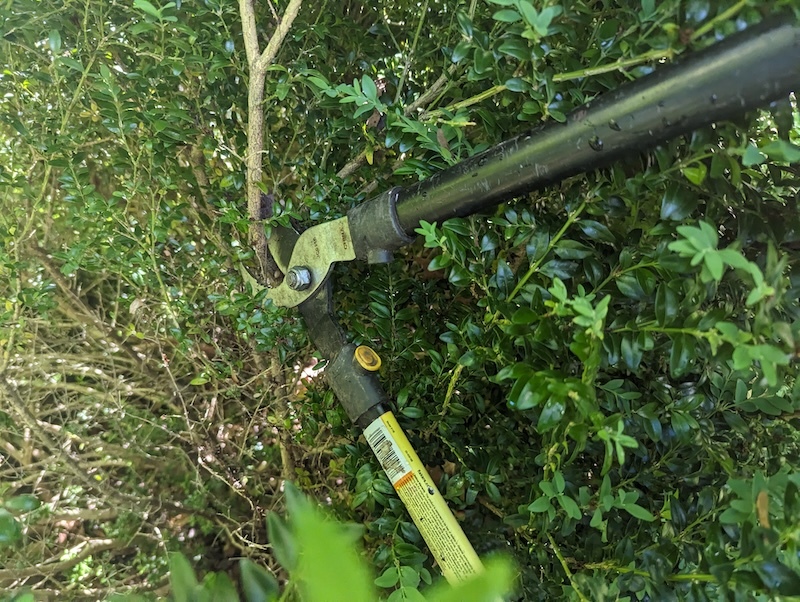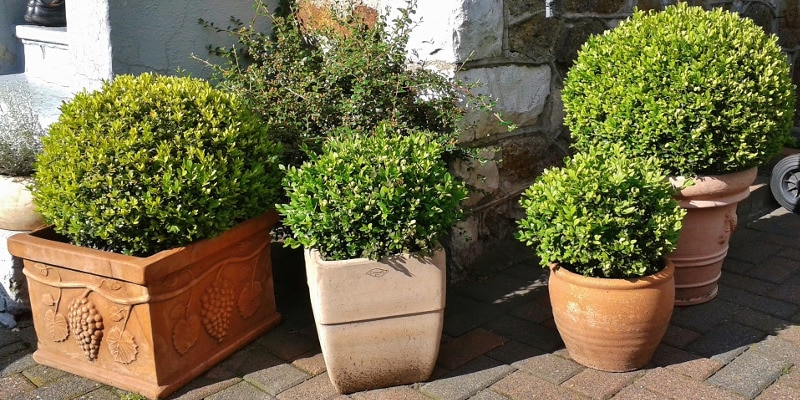Information About Boxwood Shrubs
Boxwood shrubs are a genus of around 70 species of the family Buxaceae. They are slow growing evergreen shrub that is typically grown in warmer climates, but newer varieties can handle frost. These are grown in growing zones 5 to 9. These are some of the most popular shrubs in the United States, and are typically grown into hedges.
Gardeners can also prune and trim these shrubs into a topiary and advanced gardeners can grow these into a bonsai. You can also grow these in garden planters for year round interest. These can also be trained into growing into a tree form. Most people will recognize these being grown as hedges though.
Boxwood shrubs, otherwise known as Buxus or simply “boxes”, are most often used in landscaping as an edging component. This is a shrub that requires trimming and pruning so if you are not one who enjoys fussing over your landscaping and are looking for immediate presentation, then this may not be the shrub for you. Boxwoods are native to Europe, Asia, Africa, South America, Madagascar, Central America, Mexico, and the Caribbean islands. The majority of species being tropical or subtropical. In Europe these bushes are known simply as Box.
This is an elegant shrub that keeps landscaping looking sharp and crisp. They are known for their very dense leaves and the way that they grow, remaining so compact. The boxwood shrub is slow growing and will reach about three feet tall when mature. The fact that it grows so slow is helpful for landscapers wanting to shape them into a precise pattern; this way they will never grow so fast, they get out of control.

Growing Healthy Boxwoods
Caring for boxwood or 'buxus' is extremely easy. These are popular shrubs gardeners grow into hedges and other unique shapes. Once established, these bushes require very little time and energy beyond pruning. Read more below to learn more about how to grow beautiful and healthy plants that add color to the garden all year!
Most boxwood shrubs will grow anywhere from 1 to 6 feet tall. However, some varieties can grow up to 20 feet tall when mature. These can grow from partial shade to full sunlight. The plants are very hardy and disease resistant and are low maintenance once established. Pruning these is most of the work that needs to be done.
Planting Boxwood
Planting boxwood shrubs in a group is ideal although they are perfectly fine being planted all on their own. Most landscapers enjoy how formal they look when used as edges and since they are so dense, they prune well into decorative shrubs as well. These shrubs are often used in wreaths, garlands and other Christmas decorations.
Spending some time and attention when planting your new boxwood shrubs gives them the best possible start. Consider the mature size of the variety you have when you space plants for a hedge. Fall & spring planting yields the best results, but you can plant the shrub in the summer with additional care.
Mulching boxwood shrubs is essential to their growth. Their roots grow very shallow so they require protection from the heat. A three inch layer of organic mulch is ideal starting at the trunk of the shrub and working your way out about a foot or so all the way around. Boxwood shrubs need a well-drained soil or their roots will rot. They can be planted in full sun but thrive in a partially shaded area.

Watering Boxwood
Water your newly planted boxwood well, and then about once a week for a year or so. After it has matured, you should be able to back off watering. Drainage is crucial; the roots need moisture but should not sit in soggy soil.
Fertilizing Boxwood
Boxwoods don't need much fertilizing, but a boost of balanced fertilizer each spring can promote green growth. As long as your soil balance is okay, you probably can get by on that. We've got tips on how to apply fertilizer for your boxwood.

Pruning Boxwood
Pruning boxwood is easy, even fun. The plant is easy to shape into a hedge, round ball or topiary. Prune your plant each spring to ensure new, healthy growth. Spring also is the time to check for winter damage, which is easy to cut at the tips just above a healthy, green leaf. Otherwise, just spruce up and shape as needed.

Growing Boxwood in Containers
You can grow boxwoods in nearly any container for a stunning combination of shape and color. The pot needs to be at least as wide and tall as the shrub's root ball and have good drainage. Caring for boxwoods planted in containers differs a little from caring for those planted in the yard.
Boxwood Types
You really can't go wrong with any variety of this popular shrub, but some can handle cold – or sun and heat – better than others. What are the hardiness zones of the variety you love? Beyond that, any boxwood is easy to care for and prune. Do you want a low hedge or container plant? Or a tall, narrow variety for topiary? Are you anxious to fill in your hedge or border? Some boxwood varieties grow a little faster than others.
Boxwood Scientific Classification
| Kingdom: | Plantae |
| Clade: | Tracheophytes |
| Clade: | Angiosperms |
| Clade: | Eudicots |
| Order: | Buxales |
| Family: | Buxaceae |
| Genus: | Buxus |
Common Questions About Boxwood Shrubs
Do Boxwoods Need Sun Or Shade?
There are many varieties of boxwood, and they do well in the full range of sunlight from full shade to full sun. Some varieties will even thrive in any amount of light.
How Long Does It Take For Boxwoods To Mature?
Generally, boxwoods are slow growers, typically less than six inches annually. You may think the trimming and pruning will help encourage new growth, as it does with many other plants, unfortunately, it doesn't work that way with boxwoods. This does contribute, though, to their easily maintainable status.
How Can I Accelerate Boxwoods Growth Rate?
You may feel that pruning or trimming your boxwood will help to encourage new growth, as it does with many plants, but it does not help in the case of boxwoods. There are a few things you can do to help optimize the growth potential, watering appropriately, making sure the soil is well-drained, but keeping it moist, and applying fertilizer in the spring to promote new growth and in the fall to promote root growth over the winter.
Can Boxwoods Be Grown Into Trees?
Have a question about Boxwood Shrubs? Fill out the form below and we will try and get back to your question as soon as possible. We may even feature your question on this article to help other gardeners!
 |
Author Teresa Odle - Published 8-28-2019 |
